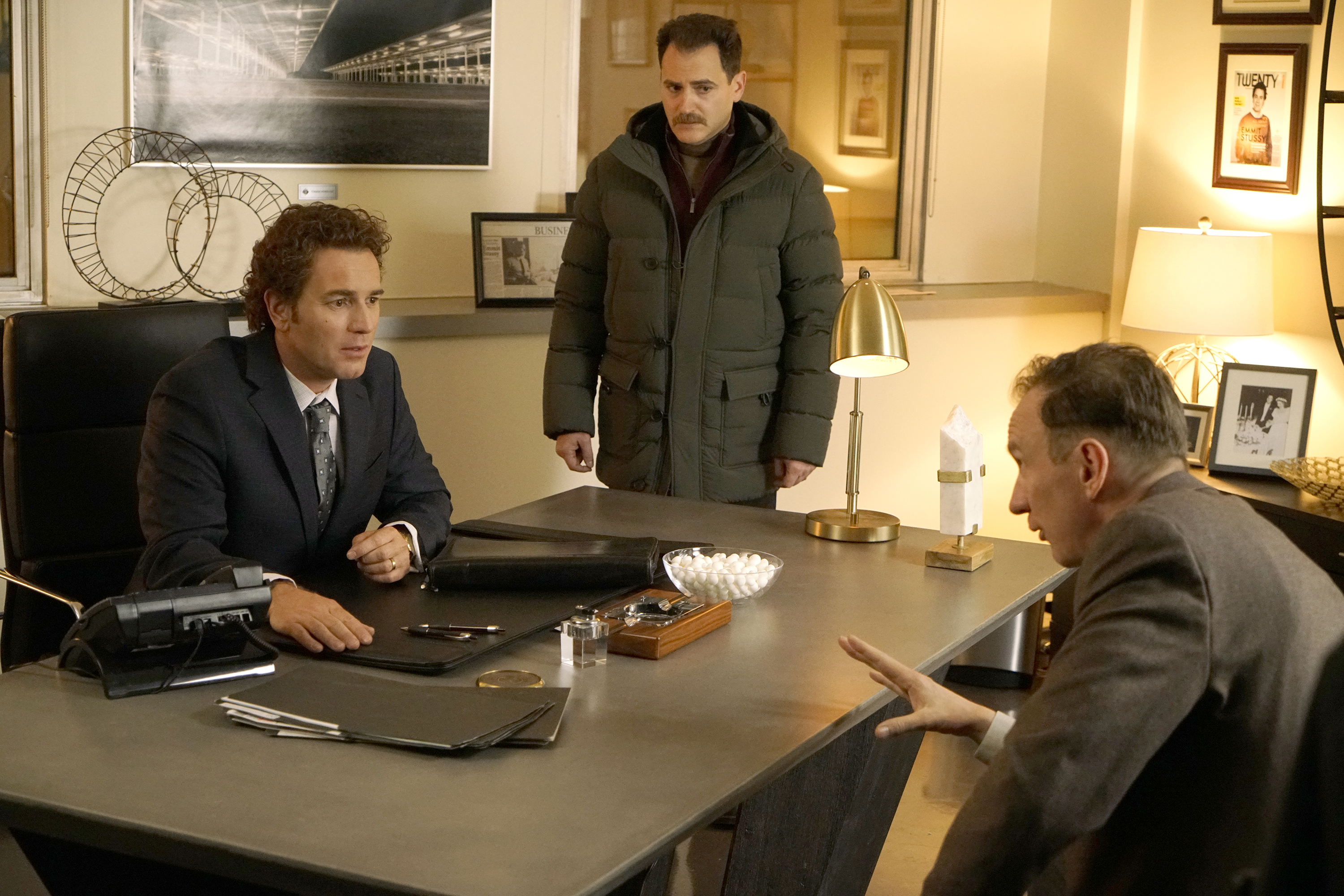While watching TV in the past year and a half, no descriptive phrase has come to mind more than “prestige TV snake oil.” I recall the term—coined by by critic Al Shipley in a 2015 year-end roundup of his favorite (and least favorite) television shows—when sitting through some new buzzed-about hour-long drama, and considering the relationship between form and content. Do they logically complement each another? Is the show casting the patina of cerebrality and gravitas on a situation where that treatment is unnecessary? Is the show dressing itself up like the Real Thing when it’s really just run-of-the-mill?
Noah Hawley’s Fargo, whose third season premiered last night, has been divisive for these reasons. Its first installment premiered just following Nic Pizzolatto’s similarly cosmic procedural True Detective–a show which went from largely beloved at the beginning of its run to the subject of almost-universal derision by the end of its second. Fargo shares True Detective’s penchant for film noir worship and postmodernist crime-narrative writing, but Hawley’s show, much more than True Detective, has always been self-aware. (It’s also explicitly humorous, and much less hung up on Lynchian creep-out tactics.) Hawley emulates the affable, character-driven sensibility of its source material–the film Fargo–and clearly idolizes the larger oeuvre of the show’s producers, Joel and Ethan Coen, as a whole.
Unlike True Detective, too, Fargo doesn’t feel like a total boys’ club. Several of its most pivotal performances, both in terms of skill and agency in the narrative, have come from female actors (particularly Alison Tolman in its first, more by-the-numbers season, and Kirsten Dunst in its madcap, ‘70s-set second installment). The beginning of the third story in Hawley’s series confirms that although Hawley has a striking cinematographic eye and can write entertaining banter, Fargo’s success is still–as it really has always been–largely reliant on its casts. It may seem like a No-shit-Sherlock observation, but Hawley’s blaring pop music cues, slow-motion transitions, split-screen montages, and overactive, oblique camerawork are sometimes enough to distract one from the point. It’s the performances that pull us into the action, and create the show’s engaging throughline despite all the moving pieces.
The show’s most decadent tendencies are on display in the Hawley-directed season premiere, which begins with a prologue set in 1988 in Berlin unrelated to the show’s primary action. The opening shot pans out from the innards of a microphone, because—well, I couldn’t tell you. After this short, slightly ostentatious fable, we’re transported to the show’s Minnesota present-day home base, to meet this season’s versions of the show’s dominant character archetypes. There’s a shrewd policewoman, Midwestern-polite but with no tolerance for bullshit, played by Carrie Coon in the Francis McDormand tradition; a couple of spineless local capitalists looking to parlay their way ahead any moderately-illegal means necessary (Ewan McGregor and Michael Stuhlbarg); and a couple of bumbling crooks whose ill-conceived get-rich-quick scheme leaves behind some unwanted casualties (Mary Elizabeth Winstead and McGregor, again, with a different wig on). There is also, of course, the cool-headed super-criminal (David Thewlis) who floats through rooms wearing a gentle sneer, like the Devil personified, backed by a team of dead-eyed, deviant goons. An accidental murder and a post-financial-crisis business deal gone bad animate the action that ensues.
Thewlis and Winstead’s performances–arguably, the show’s most engaging this season–point to both Fargo’s greatest strengths and subtle weaknesses. If their character types seem a bit farcical–a collection of specific quirks and verbal tics that are easy to visualize on paper–the attenuated acting sells them as effective grotesques. The actors play against the dialogue, which is sometimes more baroque than it needs to be. They murmur or laugh heartily when they might be expected to yell, and beam when they might be expected to snarl.
This season, Thewlis–Shakespearean actor, Mike Leigh’s greatest leading man, and, of course, Remus Lupin in Harry Potter–is certainly worth his presumably movie-grade salary. As the ghoulish “investor” V.M. Vargas, he’s all creepy mouth sounds and cockeyed stares, and the most ominous frump on TV this season. His ironic, menacing acting gives Hawley’s script weight, selling some of the lines that aren’t quite as clever as their authors might consider them to be. Vargas is legitimacy scary, particularly in his first scene, because he refuses to clarify himself to us. We know only that he’s a shadowy white-collar crook from “America” (delivered with vaguely symbolic weight) who appears to harbor no sympathy for the men he’s blackmailing and strong-arming.
Horror-flick vet Winstead, too, infuses her role with important atmosphere. She gives the relationship between her character (alluring ex-con Nikki Swango) and her unlikely boyfriend (McGregor’s ne’er-do-well parole officer character Ray Stussy) a necessary comedic spark. She projects brusque confidence when it comes to her reckless, harebrained schemes, handily winning over the fickle Ray, who allows her to break more and more parole restrictions. Does she have real affection for Ray? It seems unlikely, but Winstead sells the possibility that she’s more than just a desperate career criminal and master manipulator seducing her jailer, wringing something singular and charming out of a familiar femme fatale archetype.
Hawley provides Nikki with a few welcome, eccentric tics: namely, her career as a competitive bridge player. “We get ourselves on the map, bridge-wise, locally, in the next few months, and I’m talking sponsorships in the realm of six figures,” Nikki tells Ray, stroking his ego by calling them “sympatico to the point of spooky” when Ray plays with her in competitions. “You’re the hand and I’m the glove,” she assures him, as Heart’s “Crazy on You” blasts, underscoring the unveiling of this bizarre, suspect relationship as literally as possible. (In this season premiere, mind you, nearly every character or central relationship gets a lengthy musical introduction.)
The cartoon-scaled personality that populate Fargo are compelling to varying degrees. As a whole, their actors have more-than-nailed-down the Fargo school of acting, which mostly depends on wrapping one’s mouth around the accent and perfecting a good arsenal of forced-looking grins. The best of them builds something more individual from there. But ultimately, they’re all just pawns in Hawley’s game, though he owes them everything for making breathing singular, demented life into his mystical Minnesota world. Will they die too soon, as so many have before on this show? Or will the metaphorical air conditioner that falls on them this season be some other dumb, far-fetched plot decision? The cast is there for Fargo III, and they’re rowing hard against the tides of overwroughtness. What remains to be seen is whether Hawley can hold up his end of the bargain, and go light on the snake oil.





